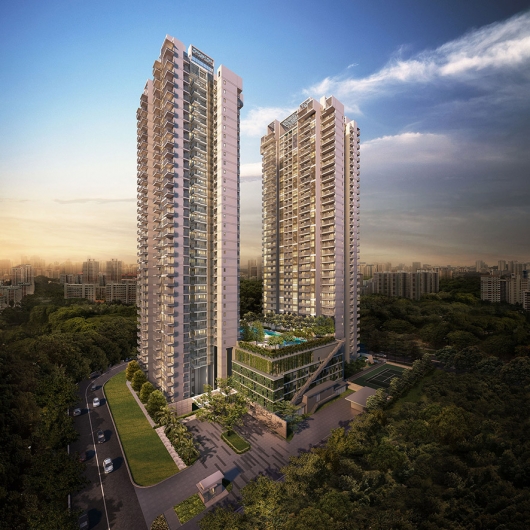insight
工程技術,地產投資,信仰家園,時尚生活
正文

Mr. Propwise is the founder of the Singapore property blog www.propwise.sg, which aims to help people make better real estate...
After slow sales at some projects in early September, market commentators were pondering if the property market was starting to buckle under the weight of the Total Debt Servicing Ratio (TDSR) framework. It appears that this pessimism was premature, with developers racking up good sales at some projects by going back to their favourite playbook – smaller, cheaper units.
Sky Vue sells 60% of the project on launch day
 |
| Artist's impression of Sky Vue (Source: CapitaLand) |
The developers, CapitaLand and Mitsubishi Estate Asia, managed to keep the total cost of the units under the magical S$1 million (and thus appeal to mass market investors and upgraders) by shrinking the size of the units. One-bedroom units ranged in size from 484 to 592 sq ft, versus next door Sky Habitat’s 635 to 958 sq ft for one-bedroom units. Sky Vue’s two-bedroom units range from 678 to 915 sq ft in size versus the 721 to 1485 sq ft of Sky Habitat’s.
While CapitaLand’s ex-CEO had famously called shoebox units “almost inhuman”, new management seems to have reversed course, with the smallest units at Sky Vue now breaking below the 500 sq ft “shoebox barrier”.
But it’s just business. Sky Habitat, with larger unit sizes and a higher psf price, has only sold ~30% of its units despite being launched over a year ago. Clearly, total unit cost and hence affordability is a key factor to drive sales, even more so now given the introduction of the TDSR. CapitaLand is just responding to market forces.
“Hong Kong”-ization of Singapore property
Sky Vue is just the latest example of a trend we’ve been seeing in new developments over the past few years – the shrinking of flats and a redefinition of what a “bedroom” stands for. Whereas in the past a “bedroom” referred to a room that was big enough to comfortably fit a queen-sized bed, two side tables and a wardrobe, “bedrooms” in some recent projects cannot even fit a standard-sized double bed.
With property prices rising faster than incomes in recent years, and the government’s cooling measures and debt curbs constraining affordability, this “Hong Kong”-ization of Singapore property has become an inevitable trend as developers design units that people are willing and able to buy (but perhaps not willing to live in), while propping up their sales and margins.
I don’t know if you’ve seen a Hong Kong apartment before, but I once visited one where you could only open the bedroom door halfway as it was blocked by the single bed in the room. And there was nothing else that could fit into the room – just the single bed. And perhaps you’ve heard of toilets so small that you could only enter it by reversing in.
Caveat emptor
For buyers, I would caution you to see the actual property before making any purchase decision. Properties are no longer comparable just by looking at the number of bedrooms, or even the gross floor area. A three-bedroom apartment can range from less than 1,000 sq ft to close to 2,000 sq ft. The mix of bay windows, balconies, air-con ledges and PES space in a unit could drastically alter how big two different properties “feel” and the useable area, even if they are of the same size.
For people who buy properties after looking at an ingeniously-designed show flat or off the plan, well, good luck.
評論
目前還沒有任何評論
登錄後才可評論.




